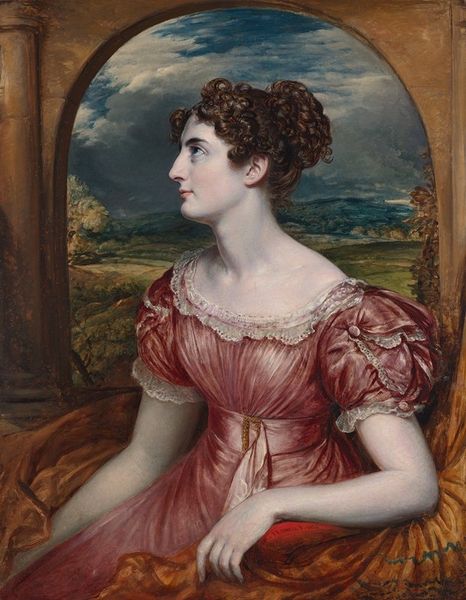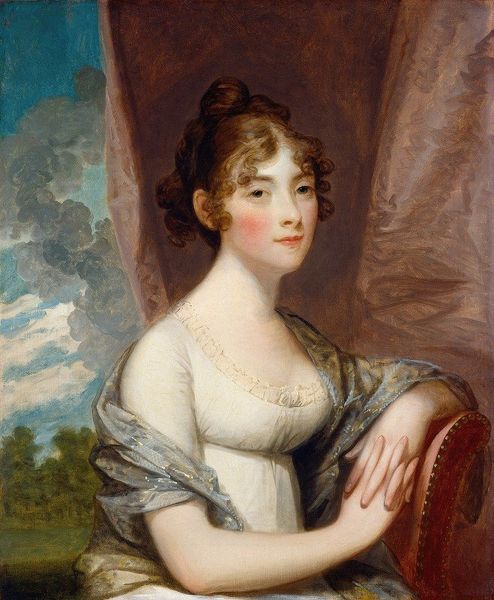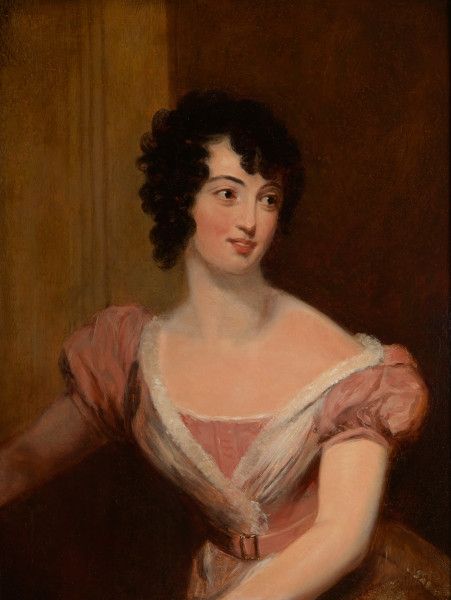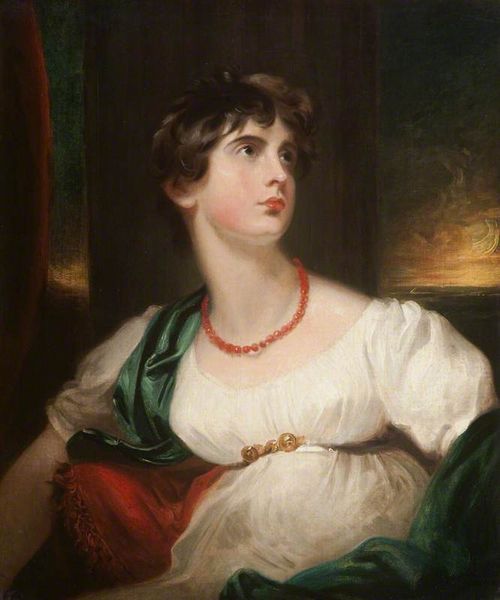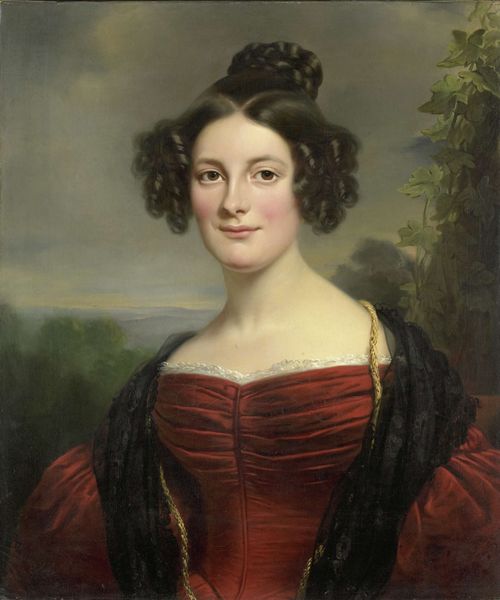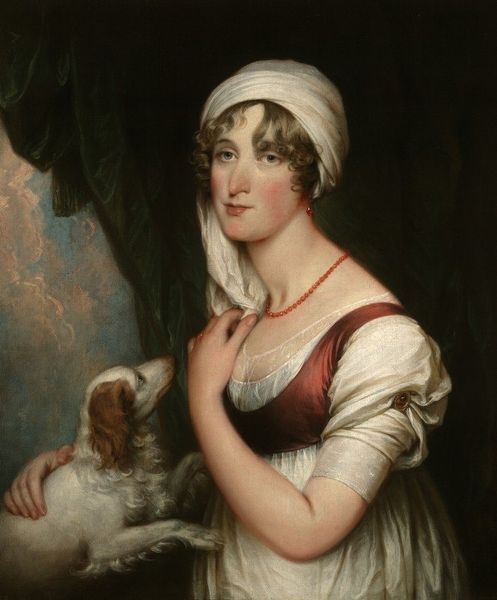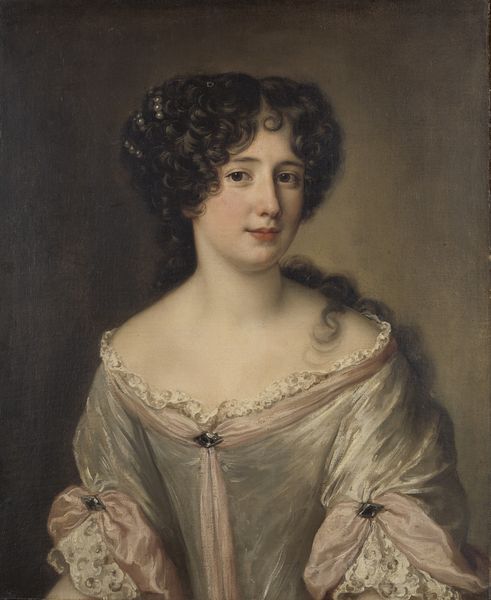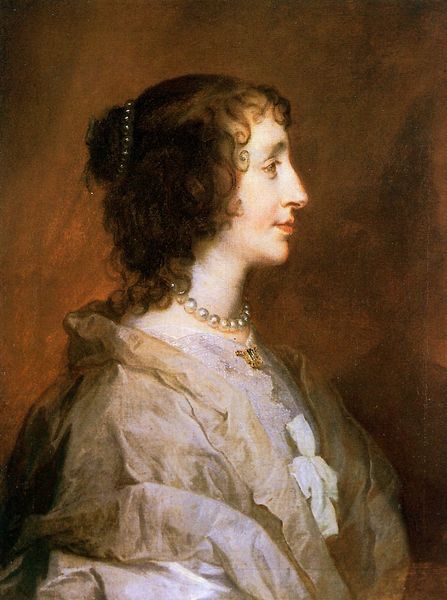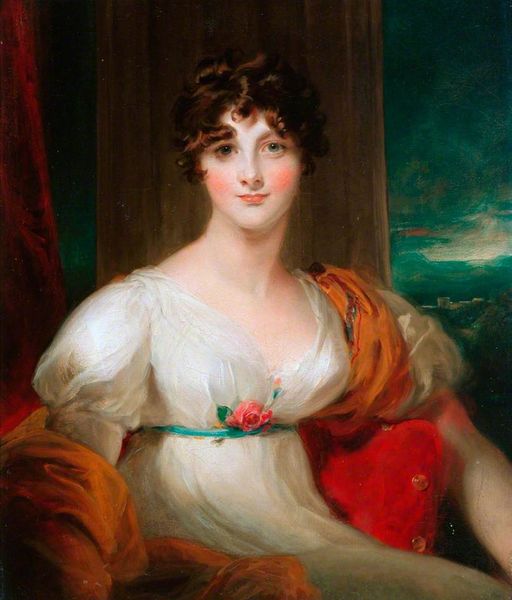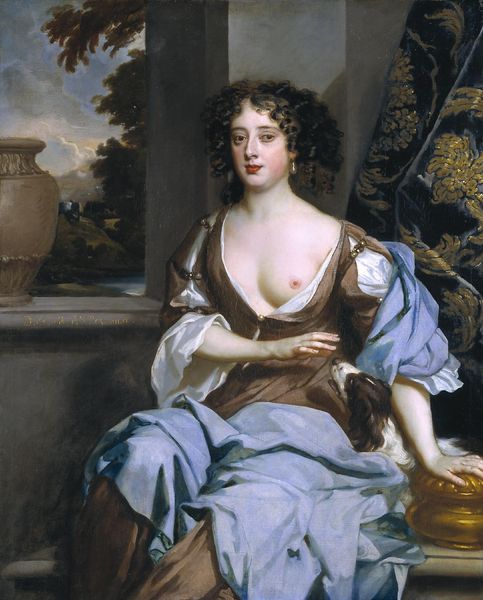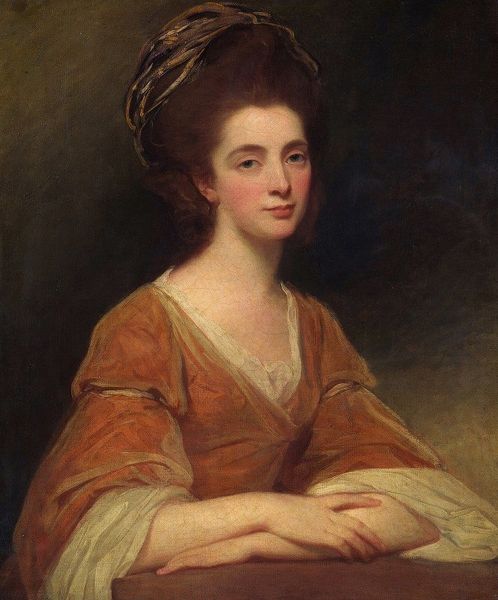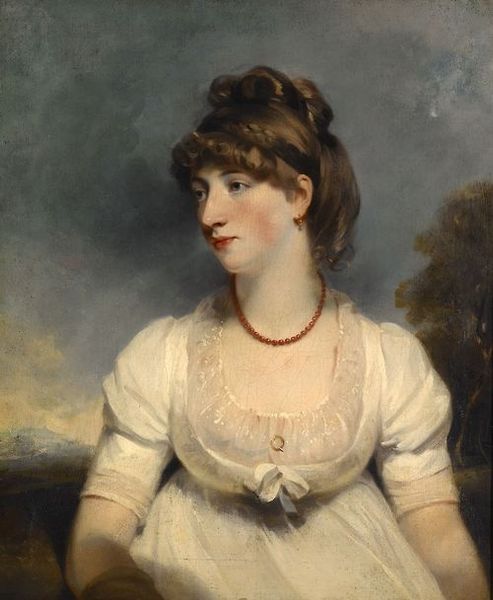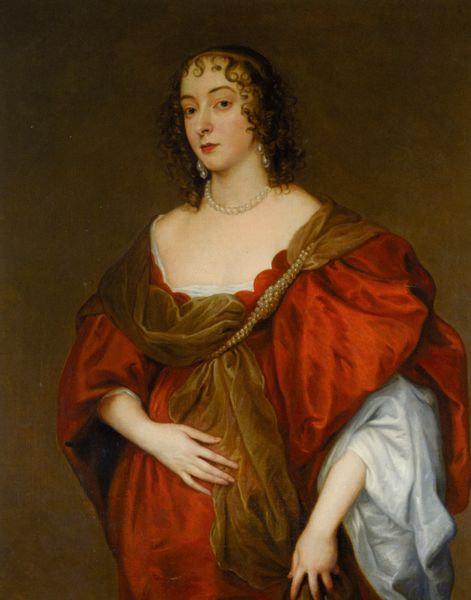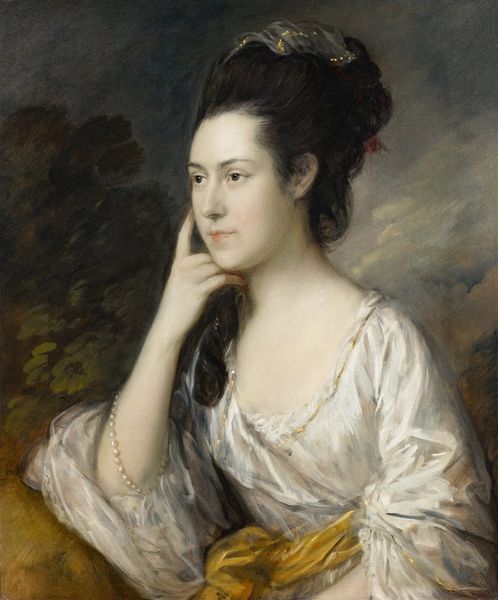
oil-paint
#
portrait
#
oil-paint
#
landscape
#
oil painting
#
romanticism
Copyright: Public Domain: Artvee
Curator: We're looking at John Linnell's 1826 oil portrait, "Miss Jane Puxley." It exemplifies the Romantic era, especially how it intertwines the subject with her natural environment. Editor: The coloring is immediately striking—the cool blue of the dress against the warm orange-red shawl, really draws my eye, not just towards her face, but down the dress itself. What are your initial impressions? Curator: Agreed. It's fascinating how Linnell uses landscape conventions within portraiture. She isn't just *in* a landscape; she is part of a picturesque composition. Note how the architecture mirrors the arc of the trees, placing her as a symbolic guardian over that bucolic background. Editor: The handling of that shawl is quite interesting; there’s real care put into depicting its texture and its fall around her figure. The landscape's interesting, yes, but Linnell seems to also highlight material concerns of fabric and dressmaking, all within the social context of portrait commissions and their patrons' expectations. What kind of labor do we think created these fabrics and forms? Curator: Exactly! This goes directly to class and wealth. Commissions like this served very specific social functions: memorializing gentry families and communicating social standing. Miss Puxley's engagement, or even future prospects were attached to works like this. Editor: And what of the pigments, then? Those vibrant colors speak not just to wealth but trade networks too. Who made these paints, and where did their ingredients come from? The image makes one curious about all this hidden labour, the economic realities behind creating the visual appearance that Linnell has rendered so vividly here. Curator: Indeed. Linnell uses his painting style here to elevate Miss Puxley beyond a mere likeness, he endows her with qualities desired by, and imposed on, women in early 19th-century society, as objects of beauty and a quiet link with nature. Editor: Seeing it now, considering the painting and the materials involved—that blue, those folds of cloth—helps to demystify, doesn’t it? It links us, I feel, to both the craftspeople who facilitated such representations and those whose position these portraits shored up. Curator: That's a brilliant point. It's not just about the face; it's a visual manifestation of socio-economic systems. Editor: A really telling image, then—of labor and longing, privilege, and paints!
Comments
No comments
Be the first to comment and join the conversation on the ultimate creative platform.
